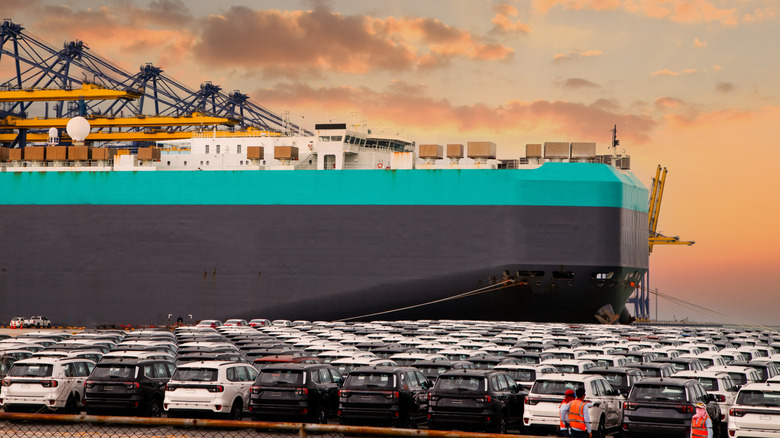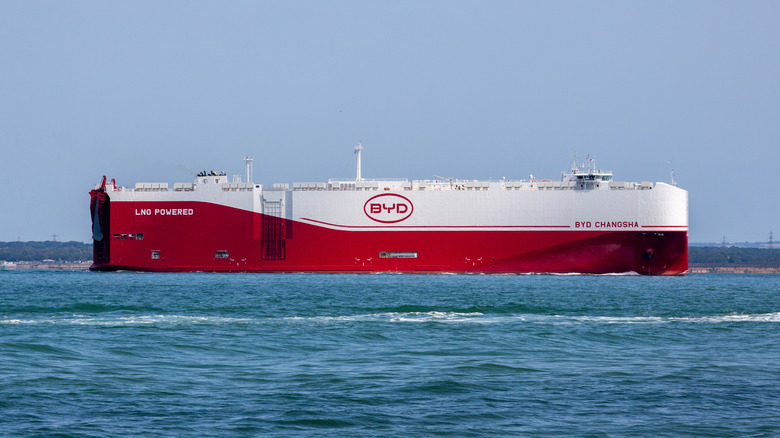How Many Cars Can Actually Fit On A Car Carrier Ship?
It's always fun when you're on the road and you pass an auto transporter full of new sports cars or unusual models you've never seen before. What you may not realize is that the ride is just one step on what may have been a long journey that started weeks prior, in another country.
The United States is one of the biggest importers of cars in the world, bringing in about 8 million vehicles in 2024, though the Trump administration's tariffs have slowed imports by about 10%. A large portion of those cars are transported here on ships, of course, and many U.S. ports are large enough to receive them, including the Port of Los Angeles, Port Freeport in Texas, and the Port of Brunswick in Georgia. We import cars on ships for obvious reasons. It's the easiest way to get a large number of vehicles from one country to another across oceans, and it's also the most economical.
Car carriers are some of the largest ships in the world, dwarfed only by the biggest cargo and tanker ships. There are more than 1,000 on the seas globally, and the industry is growing. In 2023, $975 billion worth of cars were traded globally, with millions of cars sold and transported across the ocean. There are different types of car carrier ships, and the largest can hold thousands of vehicles.
Car carrier ships
Humans have been trading and transporting goods by ship since the 3rd millennium BCE, but of course, moving cars across the ocean is a more recent innovation. In the 1950s, cars were transported by conventional cargo ships, which was a laborious process that often resulted in damaged vehicles. By the mid-1960s, ships that were dedicated to hauling cars could move more than 1,000 vehicles, and Roll-On/Roll-Off (RoRo) shipping quickly became the easiest way to ship vehicles.
RoRo shipping is exactly what it sounds like — rather than transport cars in shipping containers, the vehicles are driven onto the ship, fastened down, and then driven off when they get to their destination. Most ships that carry vehicles are RoRo because it's efficient and there's less risk of damage to the vehicles. They are also economical and oftentimes more environmentally friendly than container ships.
In fact, the largest car carrier ship in the world, BYD Shenzhen, is a RoRo ship that boasts dual-fuel technology, running on both marine diesel and liquefied natural gas. BYD Shenzhen, owned by EV manufacturer BYD, is more than 720 feet long and 120 feet wide, and can carry 9,200 vehicles. It was the fourth ship in BYD's fleet of car carriers, with the other three carrying 7,000 vehicles apiece. This ship does not sail to the U.S., but in 2024, Port Freeport welcomed the Höegh Aurora, which at the time held the title of largest vehicle carrier, with a capacity of 9,100 cars.

